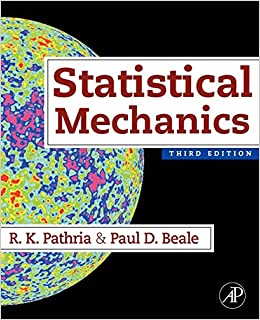The given equation of state is P = k T v b e a /
Question:
The given equation of state is
P=kTv−be−a/kTv(1)
It follows that
Misplaced &
At the critical point, both these derivatives vanish - with the result that
Extra \left or missing \right
whence vc=2b and kTc=a/4b. Equation (1) then gives: Extra \left or missing \right and hence kTc/Pcvc=e2/2≃3.695.
(a) For large v, the given equation of state may be approximated as
Extra \left or missing \right
Comparing this with eqns. (10.3.7-10), we see that the coefficient B2 in the present case is formally the same as the one for the van der Waals gas, viz. b−(a/kT).
(b) We note that the derivative (∂P/∂v)T for the Dietrici gas can be written as
Misplaced &
Clearly, if T>Tc, then (∂P/∂v)T is definitely negative; the same is true at T=Tc - except for the special case v=a/2kTc=2b when (∂P/∂v)T is zero. In any case, for all T≥Tc,P is a monotonically decreasing function of v− with the result that, for any given T and P, we have a unique v.
(c) For T<Tc,P is a non-monotonic function of v− generally decreasing with v but increasing between the values
Extra \left or missing \right
For any given T, we now have (for a certain range of P ) three possible values of v such that
v1>vmax>v2>vmin>v3;
see Figs. 12.2 and 12.3. We further note that
Extra \left or missing \right
Clearly, vmin<vc<vmax and, hence, v3<vc<v1.
Step by Step Answer:






